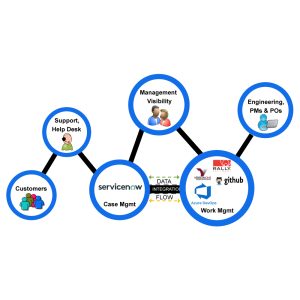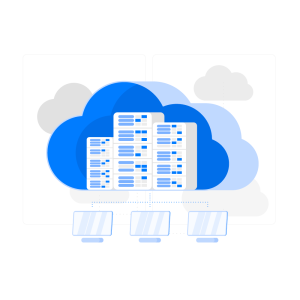In today’s fiercely competitive business environment, operational excellence is paramount. Organizations are relentlessly pursuing strategies to streamline operations, reduce expenditures, and optimize processes. In this context, process mining emerges as a transformative force.
Process mining transcends jargon or empty promises. It’s a powerful data analytics discipline that equips businesses with the capability to continuously refine their processes and make well-informed decisions.
What is Process Mining?
Imagine a detailed map of your business operations, not a static one, but a dynamic visualization that captures the actual flow of work. This is precisely what process mining delivers.
Process mining software utilizes event data recorded by your existing IT systems (ERP, CRM, etc.) to automatically discover, analyze, and visualize your real-world processes. It uncovers the hidden patterns and bottlenecks that traditional methods, often reliant on manual analysis and guesswork, might miss.
Here’s a breakdown of its key functionalities:
- Discovery: Process mining automatically reconstructs the actual process flow based on event logs, eliminating the need for manual process mapping.
- Conformance Checking: It compares the discovered process with the designed or expected process, highlighting deviations and inefficiencies.
- Performance Analysis: Process mining provides valuable insights into key performance indicators (KPIs) like cycle time, rework rates, and process adherence.
- Root Cause Analysis: By identifying bottlenecks and deviations, it helps pinpoint the root causes of process issues.
- Variant Analysis: Process mining can uncover process variations across different departments, customer segments, or product lines. This allows for targeted improvement initiatives.
- Predictive Analytics: By analyzing historical process data, process mining can predict potential bottlenecks and suggest preventive measures.
- Compliance Management: Process mining helps ensure adherence to regulations and internal control frameworks.
- Process Simulation: Businesses can use process mining to simulate the impact of potential process changes before implementation.
Why Embrace Process Mining for Continuous Improvement?
Continuous improvement isn’t just a fancy term; it’s a core principle for business success. Process mining serves as a potent tool in this philosophy, offering a treasure trove of benefits:
- Data-Driven Decisions: Ditch intuition and gut feelings. Process mining equips you with concrete data to make informed process changes and optimizations. Gone are the days of relying on hunches or anecdotal evidence. Process mining provides a clear picture of your process performance, allowing you to pinpoint areas for improvement with complete confidence.
- Enhanced Transparency: Gain a clear, data-backed understanding of how your processes truly operate, revealing hidden inefficiencies and variations. Many organizations operate with a siloed view of their processes, leading to inefficiencies and bottlenecks that go unnoticed. Process mining sheds light on the reality of your workflows, uncovering hidden deviations, rework loops, and potential compliance gaps.
- Improved Efficiency: Identify bottlenecks and rework loops, enabling you to streamline processes and optimize resource allocation. Process mining acts as a magnifying glass for inefficiencies. It pinpoints the exact steps in your process that are causing delays, rework, or unnecessary resource consumption. Armed with this knowledge, you can eliminate bottlenecks, streamline workflows, and allocate resources more effectively.
- Reduced Costs: Streamlined processes translate to reduced waste, rework, and overall operational costs. Every inefficiency in your process represents wasted time, money, and resources. Process mining helps you identify these inefficiencies and eliminate them. This translates to significant cost savings across the board, from reduced rework costs to improved resource utilization.
- Increased Customer Satisfaction: Faster turnaround times and fewer errors lead to happier and more loyal customers. In today’s customer-centric world, efficient processes are critical for customer satisfaction. Process mining helps you identify and address issues that lead to delays, errors, and inconsistencies in customer interactions. This results in faster turnaround times, fewer errors, and ultimately, happier and more loyal customers.
- Data-Driven Culture: Process mining fosters a data-centric approach within your organization, promoting data-backed decision making across all levels. By leveraging process mining, organizations move away from gut feelings and anecdotal evidence and embrace a data-driven approach to decision-making. This creates a culture of data accountability, where decisions are based on concrete insights, leading to more informed strategies and improved performance across all levels.
Here’s a real-world example: Imagine a company experiencing delays in order fulfillment. Process mining could reveal unexpected deviations – perhaps approvals are getting stuck in a manager’s queue, or a specific task is causing rework. With this data-driven insight, the company can address the bottlenecks and significantly improve order fulfillment times.
Building a Culture of Continuous Improvement with Process Mining
Process mining isn’t a one-time fix; it’s a cornerstone of a continuous improvement journey. Here’s how to leverage it effectively:
- Start with Clear Goals: Define your improvement objectives with measurable targets. Are you aiming to reduce cycle time by 15%, minimize rework by 10%, or improve compliance to a specific regulation by a set deadline? Quantifiable goals provide a benchmark to track progress and measure the success of your process mining initiatives.
- Identify Relevant Processes: Select high-impact processes that will yield the most significant improvements. Consider factors such as process complexity, error rates, customer impact, and overall cost. Analyze process volume and the potential return on investment (ROI) associated with improvement efforts.
- Gather Clean Data: Ensure your event logs are accurate and complete for reliable process mining analysis. Work with IT teams to identify and address any data quality issues. Consider implementing data governance practices to ensure ongoing data integrity.
- Collaboration is Key: Involve stakeholders across different departments who are directly or indirectly impacted by the process. This could include process owners, frontline employees, IT personnel, and even customers (for customer-facing processes). Their insights can provide valuable context and ensure proposed improvements are practical and well-received.
- Analyze and Take Action: Use process mining insights to identify improvement opportunities and implement data-driven solutions. Prioritize improvement initiatives based on their potential impact and feasibility. Develop clear action plans with defined timelines and ownership for each improvement activity.
- Monitor and Refine: Continuously monitor the impact of changes through ongoing process mining analysis. Track key performance indicators (KPIs) to measure the effectiveness of implemented solutions. Use this data to further refine your processes and identify new areas for improvement, creating a continuous feedback loop for ongoing optimization.
By following these steps and integrating process mining into your continuous improvement practices, you create a culture of data-driven decision making, allowing your organization to adapt, optimize, and thrive in the ever-evolving business landscape.
Organizations making this shift have seen tangible transformation by moving from data to decisions using process mining to drive business transformation, achieving better visibility, accountability, and strategic outcomes.
Ready to unlock the power of process mining? Nexright is here to help. We offer a comprehensive suite of process mining solutions tailored to your specific needs. Contact us today to learn more about how we can empower your organization’s continuous improvement journey.




